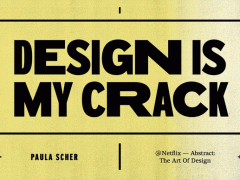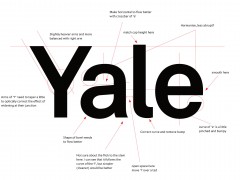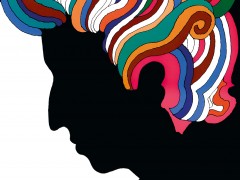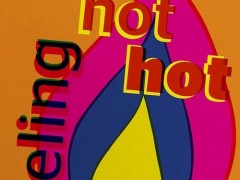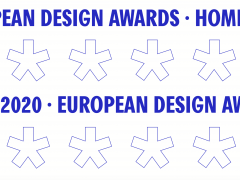An open content container: Martin Lorenz on TwoPoints.Net's modular type system for RISD
TwoPoints.Net aka Lupi Asensio and Martin Lorenz deliver. Case in study the studio's brand new visual identity system for RISD’s (Rhode Island School of Design) platform for transdisciplinary collaboration and innovation, The Center for Complexity. Typeroom caught up with Lorenz for more info of TPN’s latest typographic exploration.
Typeroom: How long have you worked on this brand new visual identity and typeface system?
Martin Lorenz: Difficult to say because we were working with the Center for Complexity simultaneously on some other projects too. I’d say we worked for approximately three month on the visual identity, but it took us almost two years to launch it. There are still some elements we have not published yet. After all, it is an evolving visual identity. Rather than a one-off identity that won’t change in the future it is an open system which implements elements of current projects.
TR: What was the most difficult part of your type design?
ML: Some of the elements are very complex, as they had to be, and stopped the font files from being exported. We had to revise all elements and test iteratively which was the maximum amount of points we were able to export without simplifying the elements too much, so they would not lose the complex aesthetics.
TR: What was the RISD provided brief?
“We approach the complex systemic challenges that shape the future from angles that can reveal opportunities for holistic and lasting change in society.” We have worked with Justin W. Cook, founding director of the Center for Complexity, before, when we developed the visual identity for the Helsinki Design Lab. So, we were familiar with his approach. This short sentence contains key ideas of strategic design. I strongly recommend reading the (free) publications of HDL for a better understanding of their definition of strategic design, which differs a lot to some other definitions.
TR: Is this a project made in lockdown mode? How did the pandemic affect the workflow, if so?
ML: The lockdown did not really affect our workflow. We are based in Germany and they are based in the US. We never meet in person anyway. Lockdown might affect us though indirectly in the future. Universities, as well as their students and staff had and have a hard time due to Corona.
TR: Jenny Holzer and Charles Goslin are two prominent graduates from the Rhode Island School of Design. How did the legacy of RISD influence your work?
ML: The main influence was the idea of the Center for Complexity embracing a holistic view on systemic challenges in society. Hence the elements we used had to be of very different nature. Diversity was key. RISD’s rich history influenced some of the elements we used. If you have visited RISD you might recognize some elements from its architecture and students’ work.
TR: Your typographic approach is simple, in contrast to the complexity of the Center. Why?
ML: The visual concept is very simple. We designed a font which modules can be filled with a heterogeneous mix of complex images. The font had to be simple, so elements could be complex. The imagery visualizes the holistic perspective on a subject and the simple structure of the font represents the clear methodology of the CfC. Clear structure and complex content coexists in the design of the visual identity and is key to the chance of lasting change through CfC’s work.
TR: What inspired you to design a module font?
ML: For the Visual Identity of the Helsinki Design Lab we designed a space to be filled with content. The Visual Identity for the Center for Complexity has a similar concept, but instead of one space, we designed many spaces/modules that can be filled. We saw an advantage in designing a font, because a font is a flexible system in itself. It is easy to apply on- and offline. Writing becomes designing. We worked with smart components in Glyphs, which also makes it really easy for us to update the identity.
TR: Which module font of the past you admire the most?
ML: There are so many. In my dissertation I analyzed around 50, which is a really small portion of what is out there. Albert-Jan Pool, designer of the FF DIN and dear friend, must have an archive of hundreds of constructed sans-serif fonts. Most of them were modular, because modules made it easy for non-designer to reproduce them. Look at Albrecht Dürers broken script modular system. Currently I am most interested in modular fonts that can become flexible visual identities, which means they do not just contain static letters, but variable elements that help the designers to design.
TR: How would you describe this type system in five words or less?
ML: An open content container.
TR: CfC’s focus areas are wide. From farming to nuclear security and design. As an educator yourself, what can design teach and how should we teach design?
ML: What and how we teach depends on the country we teach in, the university we teach at, the students, the field they specialize in, etc. We adapt our programs every time we start a new course. Sometimes even during the course. While our teaching proposals are based on experience and the knowledge of what is relevant and what is not at what state, we intend to keep an open ear. We are aware that we see things from our subjective perspective and that there are other perspectives we have to learn from. Niklas Luhmann describes society as a communication-system. There is no society without communication. Design is an intent to improve communication and if the communication goal is beneficial, improve society or at least the micro-society of the classroom.
TR: What are you working on now?
ML: We started or will start teaching soon at the KABK, HMKW, ELISAVA and IED. We are especially excited about our typography course at the KABK because Lupi and I met at the KABK and TwoPoints.Net was my graduation project. Teaching there after 20 years is like coming home.
Explore more here.
Tags/ typography, visual identity, type system, martin lorenz, twopointsnet, modular, risd




